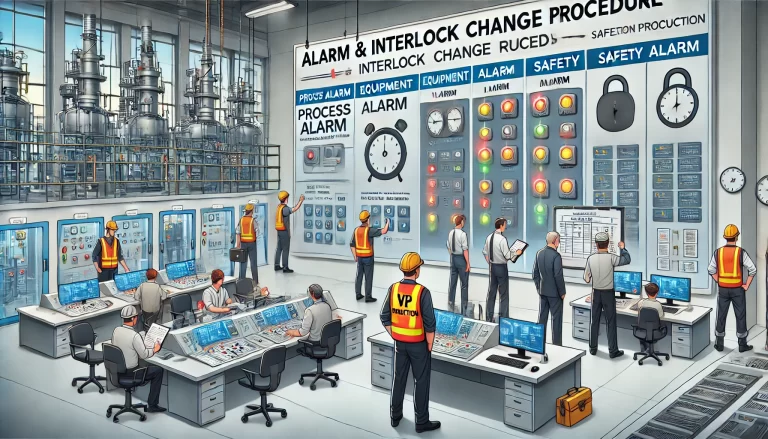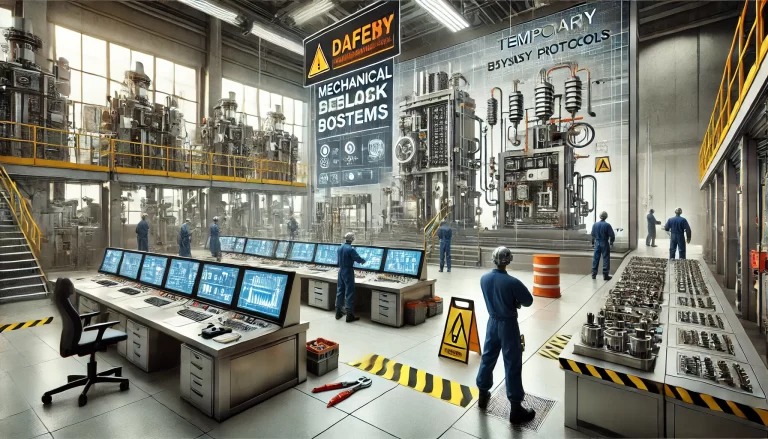Overview
Safety Instrumented Systems (SIS) are the final line of defense in chemical and process industries. They protect personnel, equipment, and the environment from hazardous events by automatically transitioning processes into safe states under abnormal conditions such as overpressure, overtemperature, or high level alarms. However, interlocks can fail due to various reasons, often resulting in severe consequences.
This article categorizes the key causes of SIS/interlock failures based on their lifecycle stages—design, selection, implementation, testing, and operation—and provides structured recommendations to mitigate these risks.

1. Inadequate Design Phase
1.1 Incomplete Safety Requirement Definition
Risk scenarios may be missed due to insufficient HAZOP or LOPA analysis.
Improper Safety Integrity Level (SIL) allocation:
Overdesign leads to unnecessary costs.
Underdesign results in inability to reduce risk to acceptable levels.
1.2 Logical Design Flaws
Process characteristics (e.g., delays, disturbances) not considered, causing trigger conditions to mismatch actual risk.
Lack of fail-safe design: For example, actuators (valves) may not default to a safe state upon power/air loss (e.g., fail-open or fail-close as required).

2. Improper Equipment Selection and SIL Validation
2.1 Unreliable Functional Safety Certification
Some devices falsely claim high SIL levels, relying on uncertified or downgraded safety data.
Both GB/T 21109.1—2022 and CCPS recommend critically evaluating vendor certification claims.
2.2 Equipment Not Meeting Design Specs
Procurement decisions driven by lowest price without technical oversight can introduce major risks.
Rumors of non-redundant SIS solutions raise concerns—redundancy, fault-tolerance, and fail-safety are core SIS principles.
2.3 Market Competition and Quality Compromise
Low-cost manufacturers may sacrifice product quality, leading to devices that don’t align with claimed specifications.

3. Poor Installation and Commissioning Practices
3.1 Unqualified SIS Installation
In many small enterprises, SIS systems are installed by contractors with no certified installation capabilities.
Some vendors offer “turnkey installation” without proper engineering qualifications, which leads to quality concerns.
4. Inadequate Interlock Testing
4.1 Lack of Formal Testing Procedures
Interlock testing is often performed perfunctorily or without operator involvement.
GB/T 41295-2022 requires test procedures to be written per loop before execution, yet many companies fail to even draft such documents.
4.2 Lack of Accuracy or Test Coverage
Incomplete or inaccurate testing creates false confidence in system performance, which is a major hidden risk.

5. Deficient Operation and Maintenance
5.1 Lack of Qualified Personnel
SIS operations and maintenance require certified staff, as per GB/T 41295-2022 and GB/T 21109.1—2022.
Many operators do not undergo formal training, leading to poor emergency handling.
5.2 No Emergency Response Drills
Absence of planned drills results in operators being unprepared during actual interlock failures or abnormal events.
5.3 No or Inadequate SRS Management
The Safety Requirement Specification (SRS) is the cornerstone of SIS lifecycle management.
Some companies lack a proper SRS or treat it as a formality, significantly weakening system governance.
5.4 Partial or Non-Activation of Interlock Functions
A critical yet often overlooked issue—some SIS functions are not fully commissioned, rendering them ineffective in emergencies.

Conclusion and Recommendations
Interlock failure is never a single-point issue—it is the result of design, procurement, installation, testing, and operation all failing in some aspect. To prevent these failures, a systematic approach is necessary:
✅ 5 Key Measures to Prevent Interlock Failures
Define and manage SRS across the entire lifecycle.
Ensure third-party validated SIL ratings and certifications.
Enforce standardized installation and commissioning practices.
Train and certify all SIS-related personnel.
Reject “lowest price wins” logic when safety is at stake.
Only through collaboration between engineering teams, vendors, construction contractors, and management can we break the “low cost – poor quality – accidents” loop and build truly reliable SIS systems.
